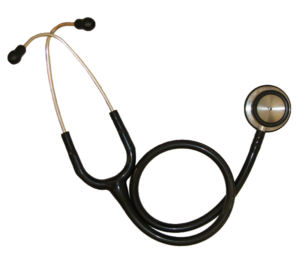 This post is about an issue that I've covered before - the issue of unnecessary medical tests and care, which has been documented by many, especially Dr. H. Gilbert Welch (here and here). In the past I've focused on research documenting physical and emotional harms resulting from overuse of some medical tests and procedures, especially some types of cancer screening, but today's post is about the financial harms of unnecessary medical tests and procedures.
This post is about an issue that I've covered before - the issue of unnecessary medical tests and care, which has been documented by many, especially Dr. H. Gilbert Welch (here and here). In the past I've focused on research documenting physical and emotional harms resulting from overuse of some medical tests and procedures, especially some types of cancer screening, but today's post is about the financial harms of unnecessary medical tests and procedures.
We're talking about medical tests or services that are overused, perhaps done "routinely" when there are no symptoms or real reasons to do the test. The cost of unnecessary tests and services can be financially devastating to the person receiving the bill(s). But this "waste" has also been estimated at $765 billion a year by the National Academy of Medicine. This is about a fourth of all the money spent each year on health care! Wow. The following article by Marshall Allen is co-published on both ProPublica and NPR. Excerpts from NPR:
Unnecessary Medical Care: More Common Than You Might Imagine
It's one of the intractable financial boondoggles of the U.S. health care system: Lots and lots of patients get lots and lots of tests and procedures that they don't need. Women still get annual cervical cancer testing even when it's recommended every three to five years for most women. Healthy patients are subjected to slates of unnecessary lab work before elective procedures. Doctors routinely order annual electrocardiograms and other heart tests for people who don't need them.
That all adds up to substantial expense that drives up the cost of care for all of us. Just how much, though, is seldom tallied. So, the Washington Health Alliance, a nonprofit dedicated to making care safer and more affordable, decided to find out. The group scoured the insurance claims from 1.3 million patients in Washington state who received one of 47 tests or services that medical experts have flagged as overused or unnecessary. What the group found should cause both doctors, and their patients, to rethink that next referral. In a single year:
- More than 600,000 patients underwent a treatment they didn't need, treatments that collectively cost an estimated $282 million.
- More than a third of the money spent on the 47 tests or services went to unnecessary care.
- 3 in 4 annual cervical cancer screenings were performed on women who had adequate prior screenings – at a cost of $19 million.
- About 85 percent of the lab tests to prep healthy patients for low-risk surgery were unnecessary — squandering about $86 million.
- Needless annual heart tests on low-risk patients consumed $40 million.
Susie Dade, deputy director of the alliance and primary author of the report released Thursday, said almost half the care examined was wasteful. Much of it comprised the sort of low-cost, ubiquitous tests and treatments that don't garner a second look. But "little things add up," she said. "It's easy for a single doctor and patient to say, 'Why not do this test? What difference does it make?'"
ProPublica has spent the past year examining how the American health care system squanders money, often in ways that are overlooked by providers and patients alike. The waste is widespread – estimated at $765 billion a year by the National Academy of Medicine, about a fourth of all the money spent each year on health care.
Dr. H. Gilbert Welch, a professor at The Dartmouth Institute who writes books about overuse, said the findings come back to "Economics 101." The medical system is still dominated by a payment system that pays providers for doing tests and procedures. "Incentives matter," Welch said. "As long as people are paid more to do more they will tend to do too much."
